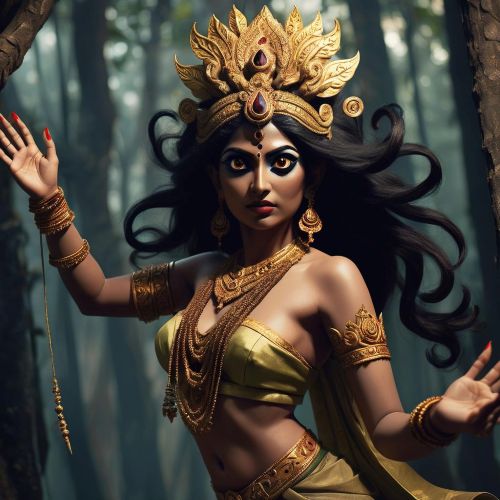Sri Lankan Mythology
Sri Lankan mythology is a vibrant blend of indigenous beliefs, South Asian religious traditions, and centuries of cultural exchange that have shaped the island’s spiritual identity. Rooted in ancient folklore and infused with Buddhist, Hindu, and indigenous Vedda influences, it weaves together tales of gods, demons, spirits, and legendary kings who define the nation’s mythic landscape. These stories not only explain the creation of the island and the origins of its people but also embody moral and spiritual values that continue to guide Sri Lankan culture. From the sacred mountains of Adam’s Peak to the ancient cities of Anuradhapura and Polonnaruwa, every region carries mythological significance, reflecting a worldview where the divine and natural realms exist in perfect harmony. Sri Lankan mythology, much like its history, is a living tradition that merges devotion, heritage, and the island’s profound connection to the spiritual world.
The mythology of Sri Lanka is closely tied to Buddhism, which has been the dominant religion on the island for over two millennia. Many of its legends revolve around the life and teachings of the Buddha and his visits to Sri Lanka, which are described in ancient texts like the Mahavamsa. According to these accounts, the Buddha visited the island three times to bless it and ensure its protection from evil spirits. Sites such as Mahiyangana, Nagadeepa, and Kelaniya are revered as sacred places where the Buddha’s presence sanctified the land. Alongside these Buddhist narratives, Hindu deities such as Vishnu, Shiva, and Kataragama are also venerated, symbolizing the harmonious coexistence of different faiths. Kataragama, in particular, holds a special place in Sri Lankan mythology as a powerful guardian god who protects the island and grants blessings to all, regardless of religion or ethnicity. His stories, blending Buddhist and Hindu elements, embody the spirit of unity and devotion that defines Sri Lankan mythology.
Local folklore adds another fascinating dimension to the island’s mythological tapestry. The Yakshas, ancient nature spirits who once inhabited Sri Lanka, are believed to have ruled the land before the arrival of human civilization. Some legends claim that King Ravana, the great antagonist of the Indian epic Ramayana, was a descendant of these Yakshas and the ruler of the island’s golden kingdom of Lanka. Ravana is portrayed not merely as a villain but as a brilliant ruler, scholar, and musician—a symbol of Sri Lankan pride and cultural identity. Folklore also tells of Naiyaka spirits, forest deities, and guardian demons who protect specific regions and families. Rituals such as Bali and Thovil ceremonies invoke these spirits to heal illnesses, remove misfortune, and restore spiritual balance, blending mythological storytelling with living tradition in a uniquely Sri Lankan way.
Today, Sri Lankan mythology continues to influence art, dance, architecture, and everyday spirituality. The masks used in traditional Kolam and Sanni Yakuma performances, for example, represent mythic characters who embody emotions, diseases, or celestial beings, turning ancient myths into living theatre. Temples and shrines across the island preserve these stories through murals and sculptures that depict gods, demons, and cosmic events. Beyond religion and art, these myths foster a deep sense of identity and belonging, linking modern Sri Lankans to their ancestral wisdom. In a world of rapid change, Sri Lankan mythology stands as a timeless reminder of the island’s rich spiritual legacy—where gods walk among mortals, and every legend carries the heartbeat of the land itself.




